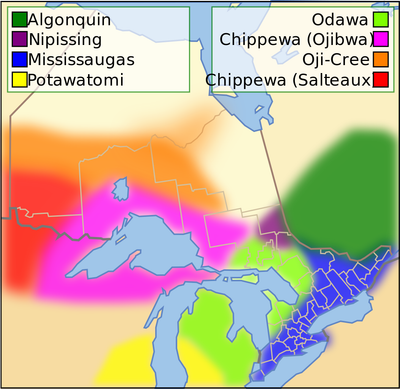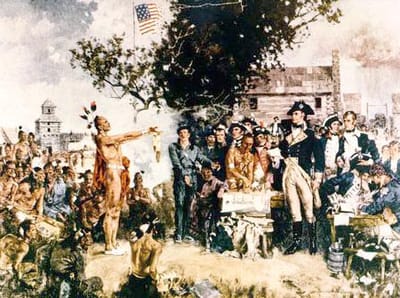History and Location of Ojibwa Peolple


In the Revolutionary War, the Ojibwa joined British forces in order to stop colonists from intruding upon their land. After the British were defeated, the Ojibwa were forced to give up most of their land in Michigan and were displaced. In 1830, The Indian Removal act was signed into law and the Ojibwa people split once again. Many moved to Canada, while some tried to keep plots of land given to them by the U.S. Government. Taxes were harsh on these plots, so many had to move to the "Indian Territory", which was located in Oklahoma and Kansas. By the 1860's, most native groups across the country were all relocated to this land.
In 2010, 112,757 Ojibwa were counted in the U.S. In 2001, 20,890 Ojibwa lived in Canada. Today, many Ojibwa still live on reservations and suffer many socioeconomic problems caused by gambling, alcoholism, and depression. Some Ojibwa returned to the states were their ancestors used to reside. These states include Minnesota, Michigan, North and South Dakota, and Wisconsin.



